GATEway 2030
The Future with Driver-less Cars


Context & Location.

Avenues for Design Research & Possible Outcomes.
> As part of an £8million research fund, this project was initiated in collaboration with GATEway (Greenwich Automated Transport Environment) and TRL (Transport Research Laboratory, UK) to re- imagine the Greenwich Peninsula in the context of 2030; understand how automated vehicles can fit into our future urban mobility needs, and the barriers to overcome.
> Driverless cars are going to have a significant impact on our cities, especially on our immediate urban environments. This transformation from driver-dependency to driverless commuting would be positive but at the same time disruptive to our existing built environment, habits and urban culture. It will reshape our understanding of how we perceive cars aesthetically and use them practically as our means of transport on a daily basis.
> To address this urban phenomenon, this research project explored the driverless car through multiple design lenses (shared, smaller, lighter, convenient, flexible with multi-purpose usage/programme) — envisioning and re-imagining the Greenwich Peninsula with the introduction of driverless cars that focus on how autonomous transport will affect our day-to-day living, offering a chance to discuss how social space, as much as personal space, should inform designs for improved transportation.
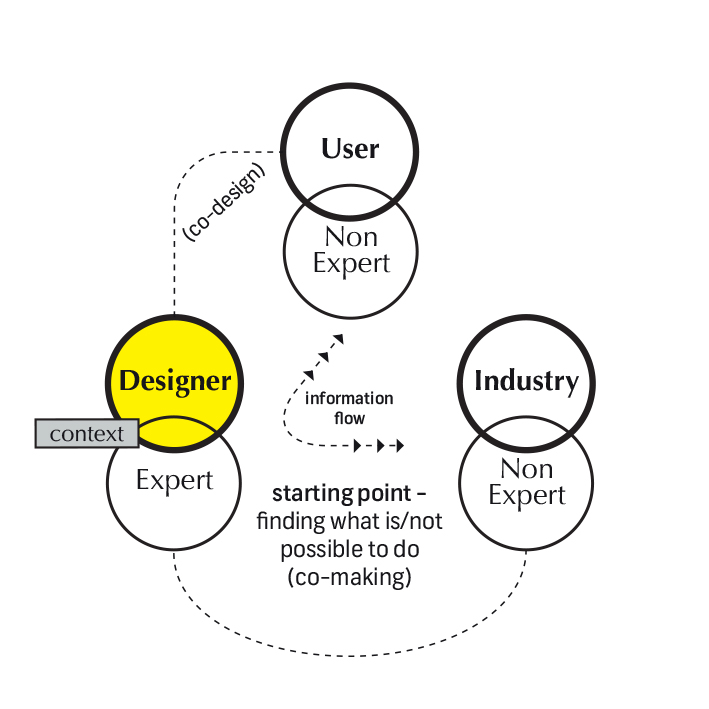 This research project is based on the Blue Sky & Intuitive model to help develop and envision a number of future scenarios using key user and market needs and insights.
This research project is based on the Blue Sky & Intuitive model to help develop and envision a number of future scenarios using key user and market needs and insights.Individual views of the designer helped envision the future based on diverse views/insights of the world. The proposals encapsulate subjective appraisals gathered through experimental processes and beliefs.
> Using the Blue Sky & Intuitive model, six proposals originated from this research: Transmission Fluid (Jay Jordan), Shop To-Go (Samuel Lewis), AsOrb (Finlay Johnson), Driverless Domicile Entertainment System (Ioannis Vasileiou and Louis Stocks), Hinto (Adriane Escarfullery), Live Happy (Leonardo Carmo Silva and Hasan Jamshed).
Key words: Driverless;
Future mobility;
Autonomous transport
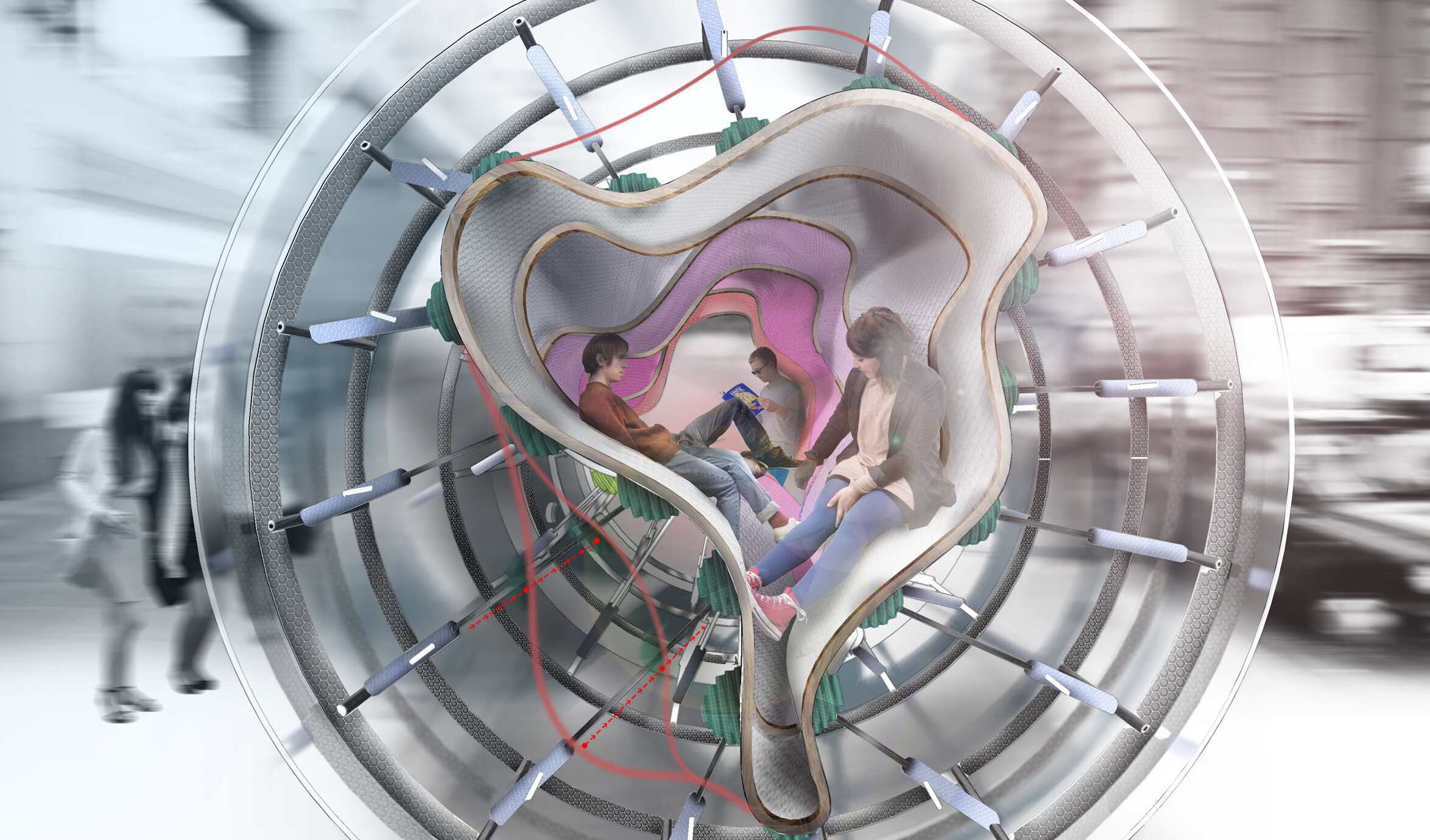
Proposal 1: Transmission Fluid.
> Transmission Fluid is a driverless vehicle designed for multiple passengers. Inspired by the “School on Wheels” concept, a large, flexible architecture would respond to passengers’ preferences, with each segment taking on attributes of activity-led spaces; an office, a classroom, a playground, a gym - each space afforded a specific but easily changeable purpose. This is an ambitious proposal for the use of time in motion, where the getting from A to B could be more efficiently used to forge relationships, improve skills, increase knowledge, through work or play.
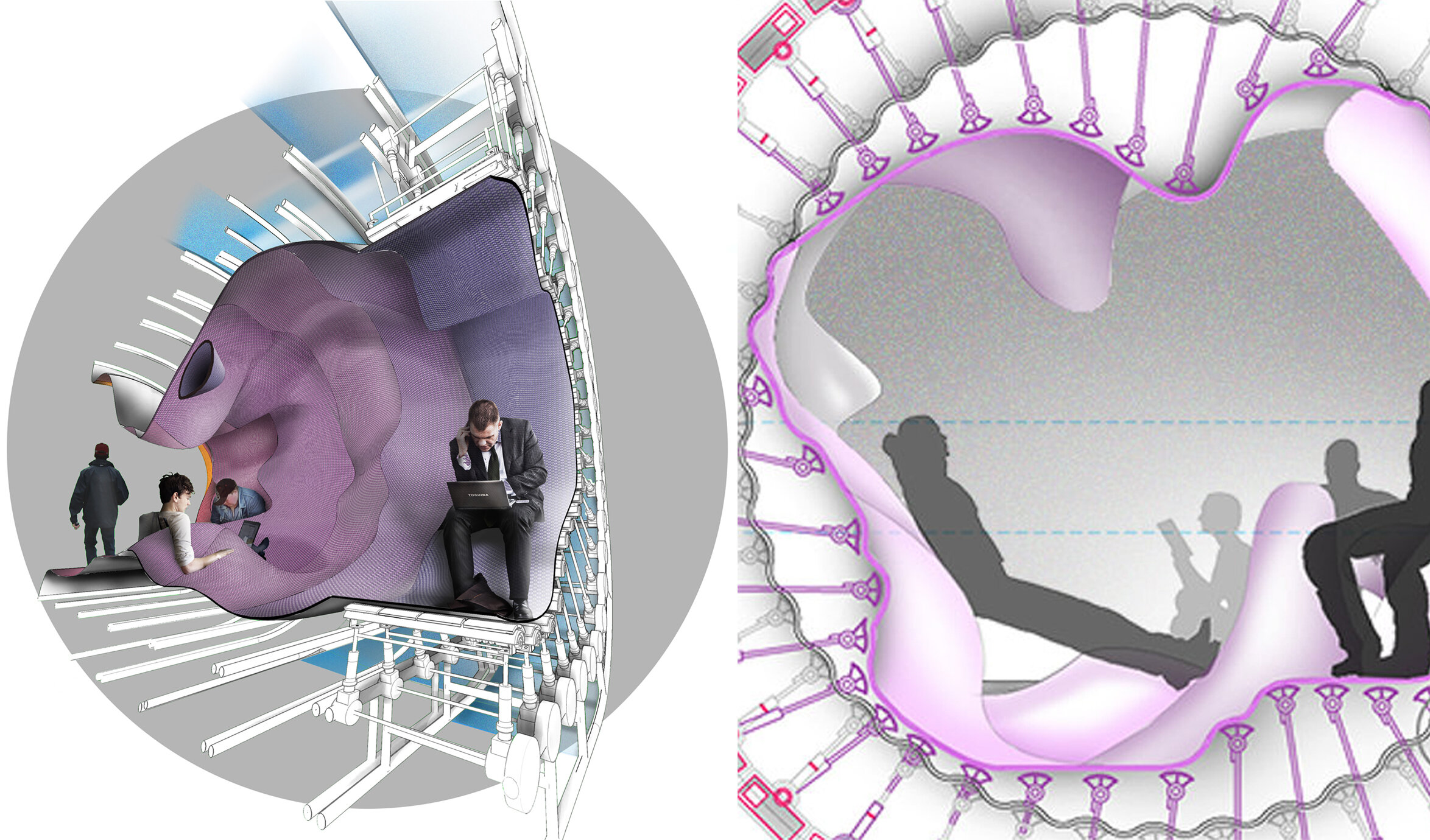
Proposal 1: Transmission Fluid (interior structure & mechanisms).
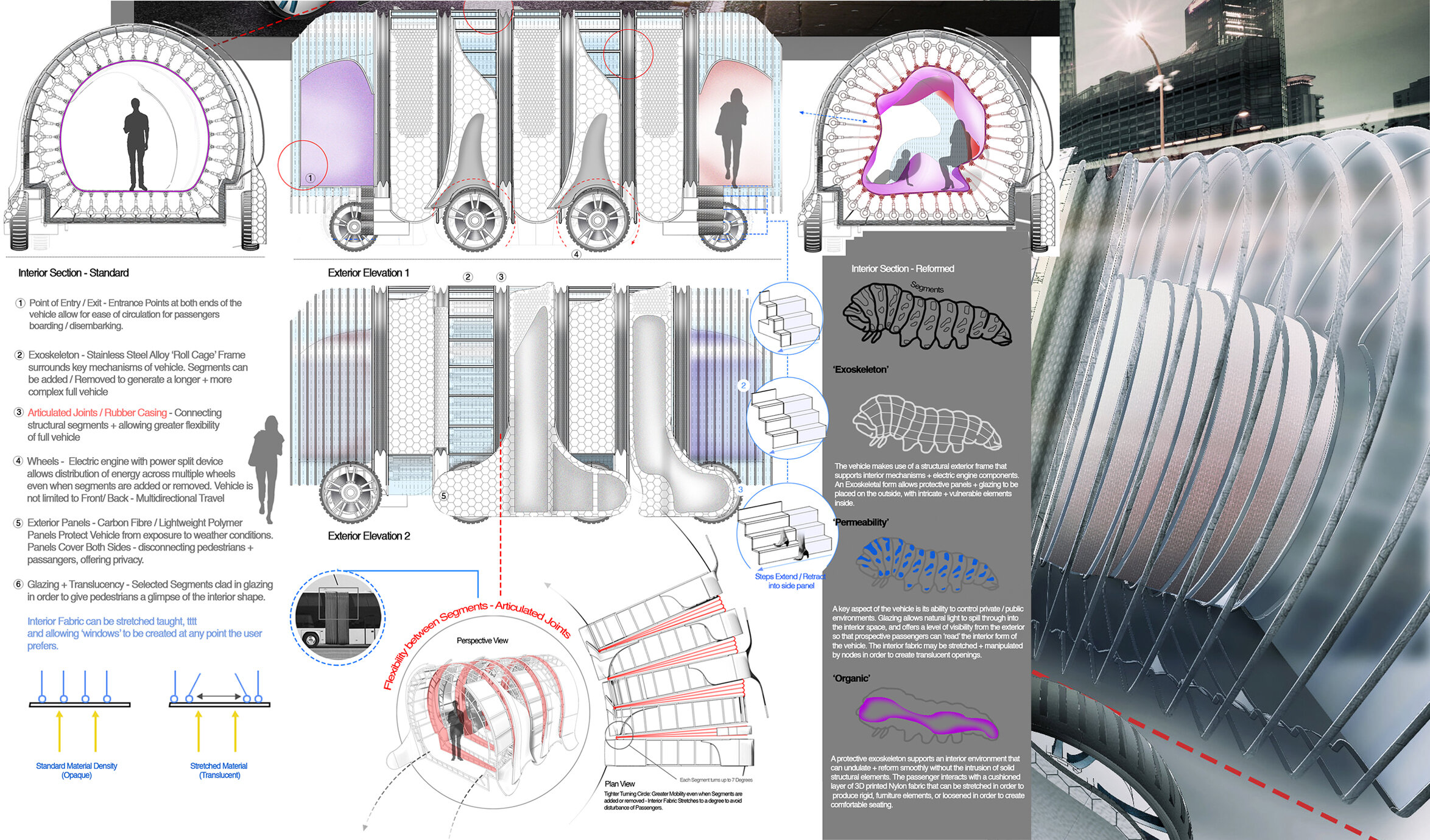
Proposal 1: Transmission Fluid (typology).
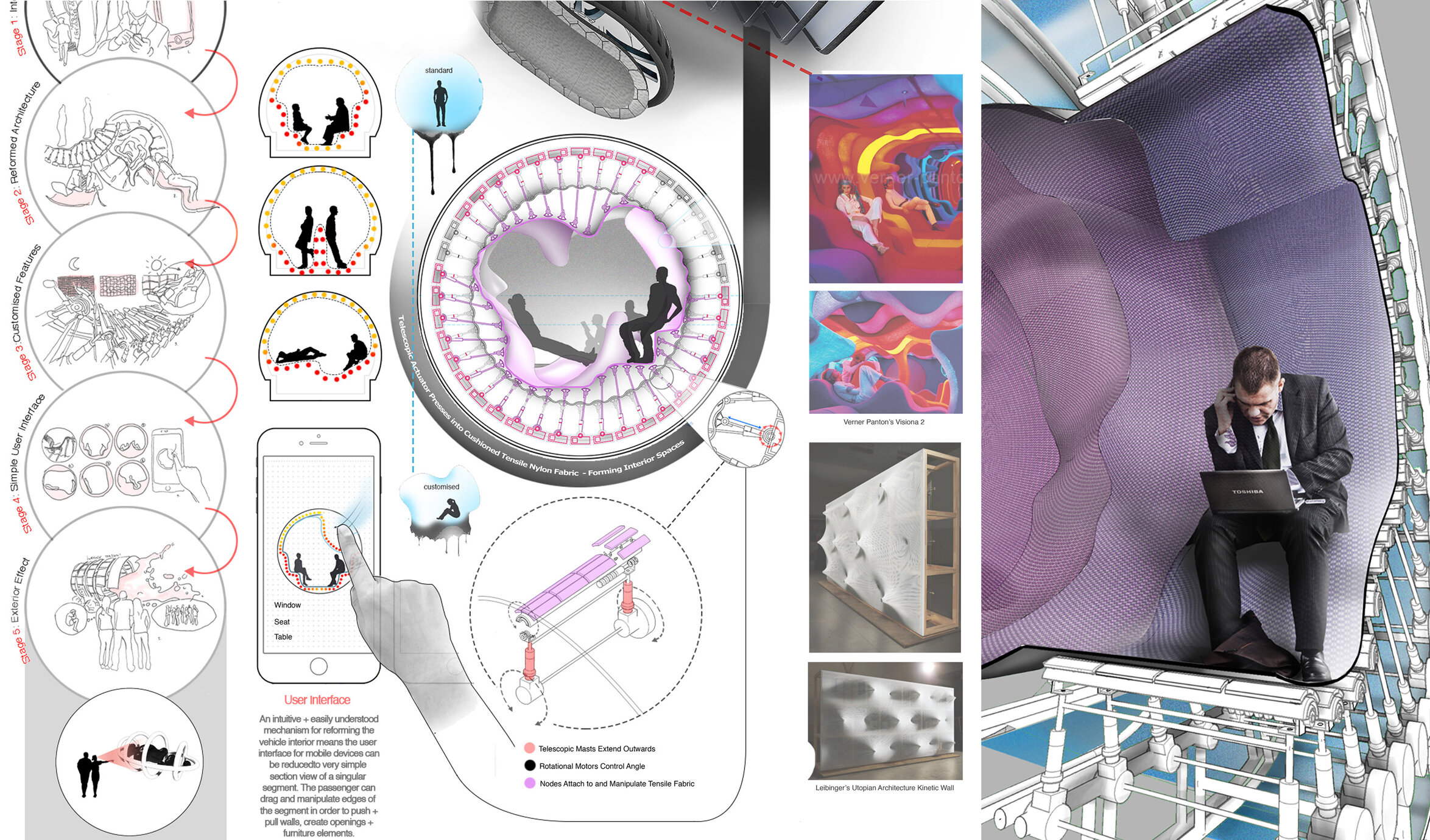
Proposal 1: Transmission Fluid (structure).
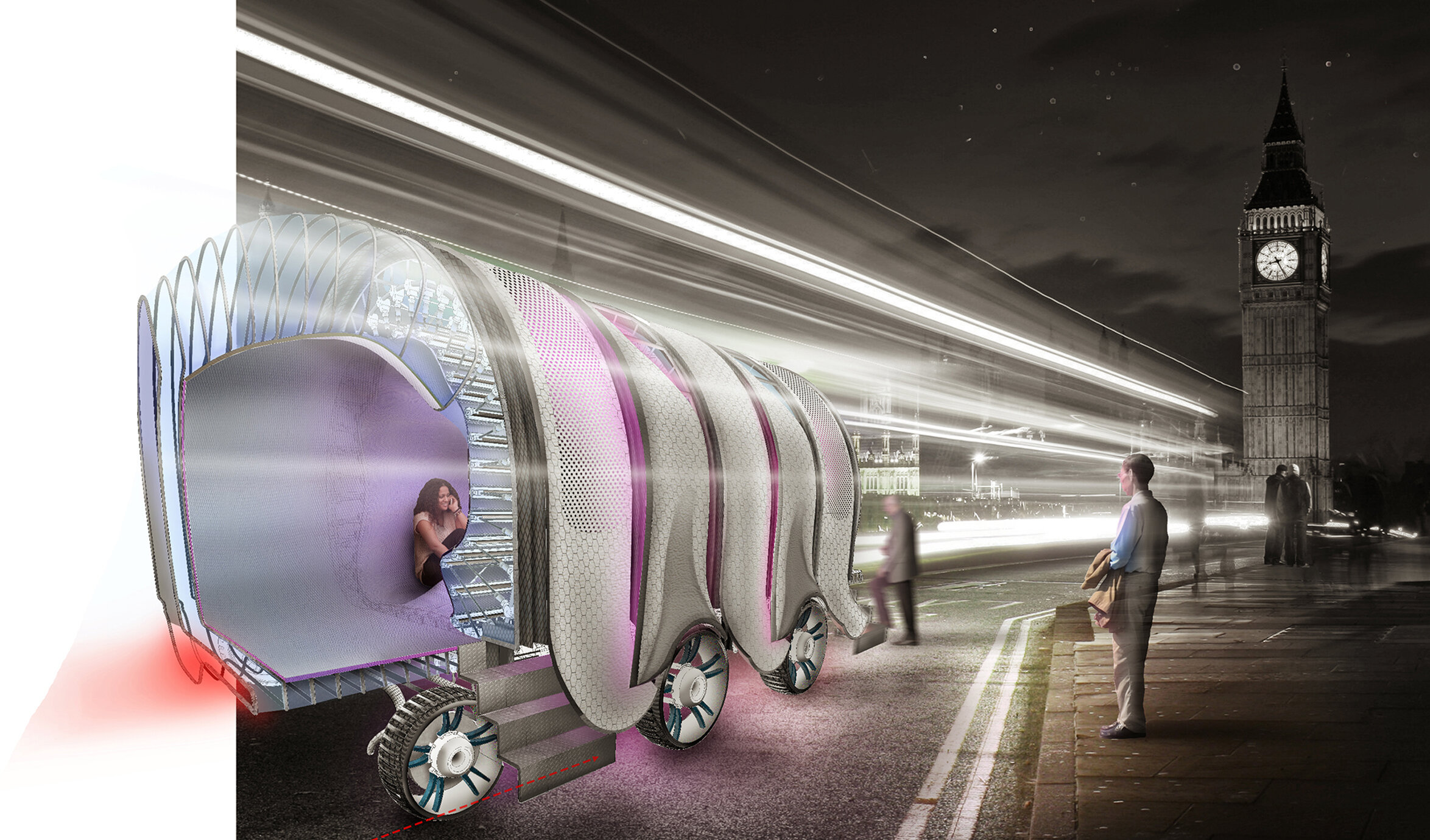
Proposal 1: Transmission Fluid (exterior view).
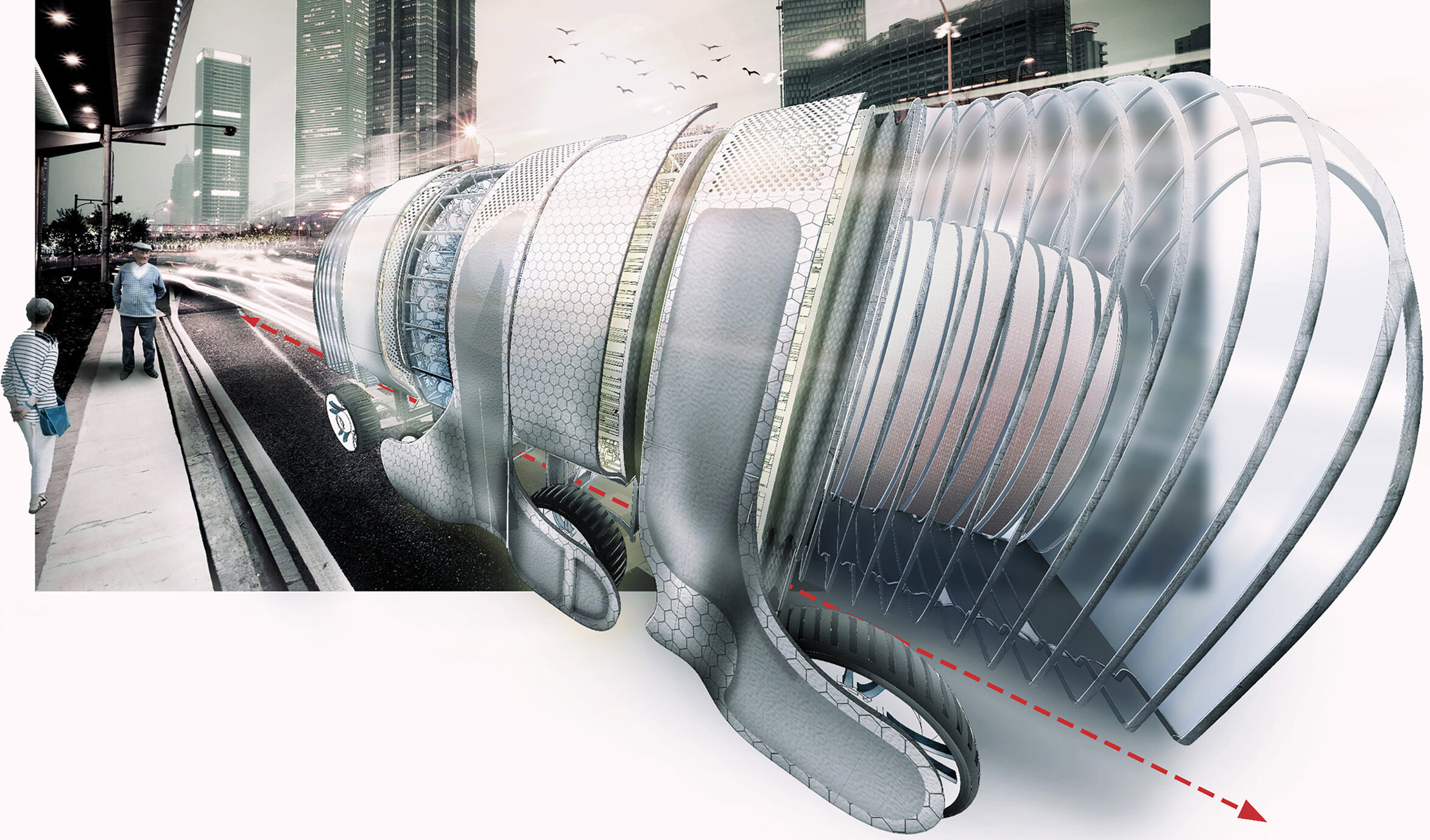
Proposal 1: Transmission Fluid (exterior view).
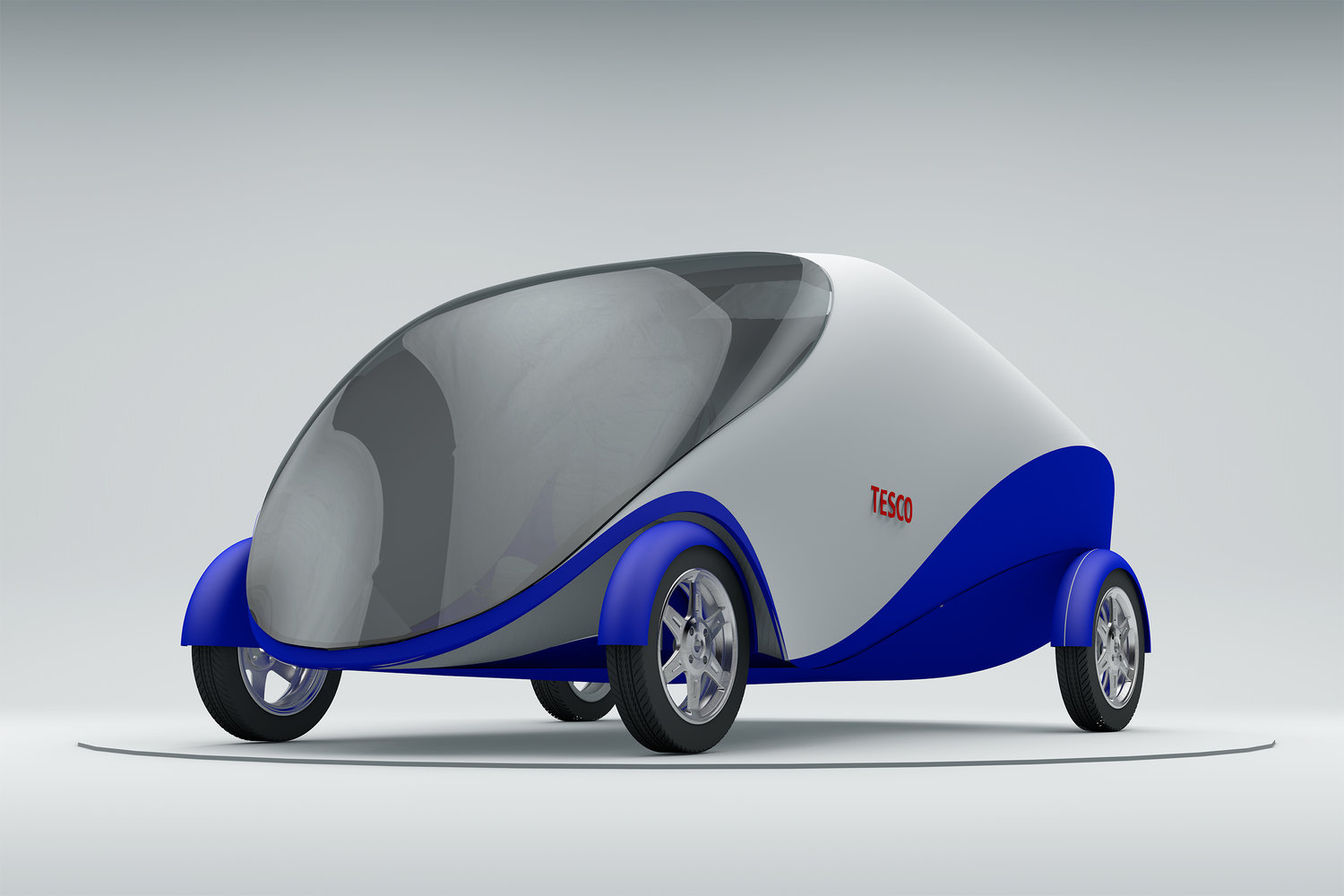
Proposal 2: Shop To-Go.
> Shop To-Go is a driverless vehicle that echoes a landmark for Greenwich’s tech industry; the first of its kind, a trial of self-driving delivery robots, created by Starship Technologies, and which took place earlier this year. This proposal identifies a similar need for driverless deliveries but proposes a much more sophisticated vehicle, one capable of transporting heavier loads for longer distances.

Proposal 2: Shop To-Go (interior view).
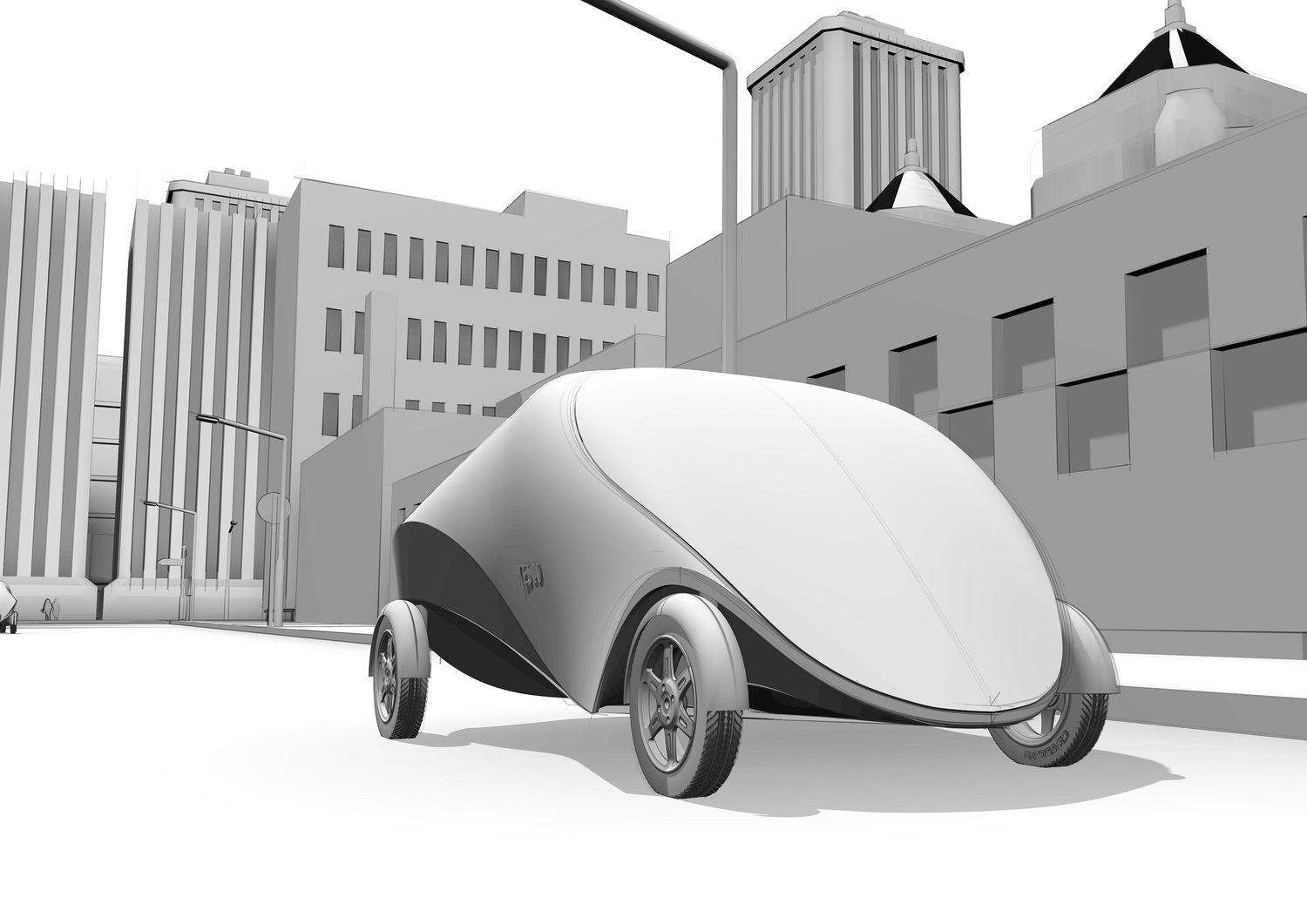
Proposal 2: Shop To-Go (exterior view).

Proposal 3: AsOrb.
> AsOrb is a lightweight and compact vehicle that aims to reduce environmental impact by allowing only a fixed number of driverless vehicles on the road. A shared transport system similar to that of car-pooling, the interior of the vehicle can be changed in between each ride to meet the desire for personalised space.
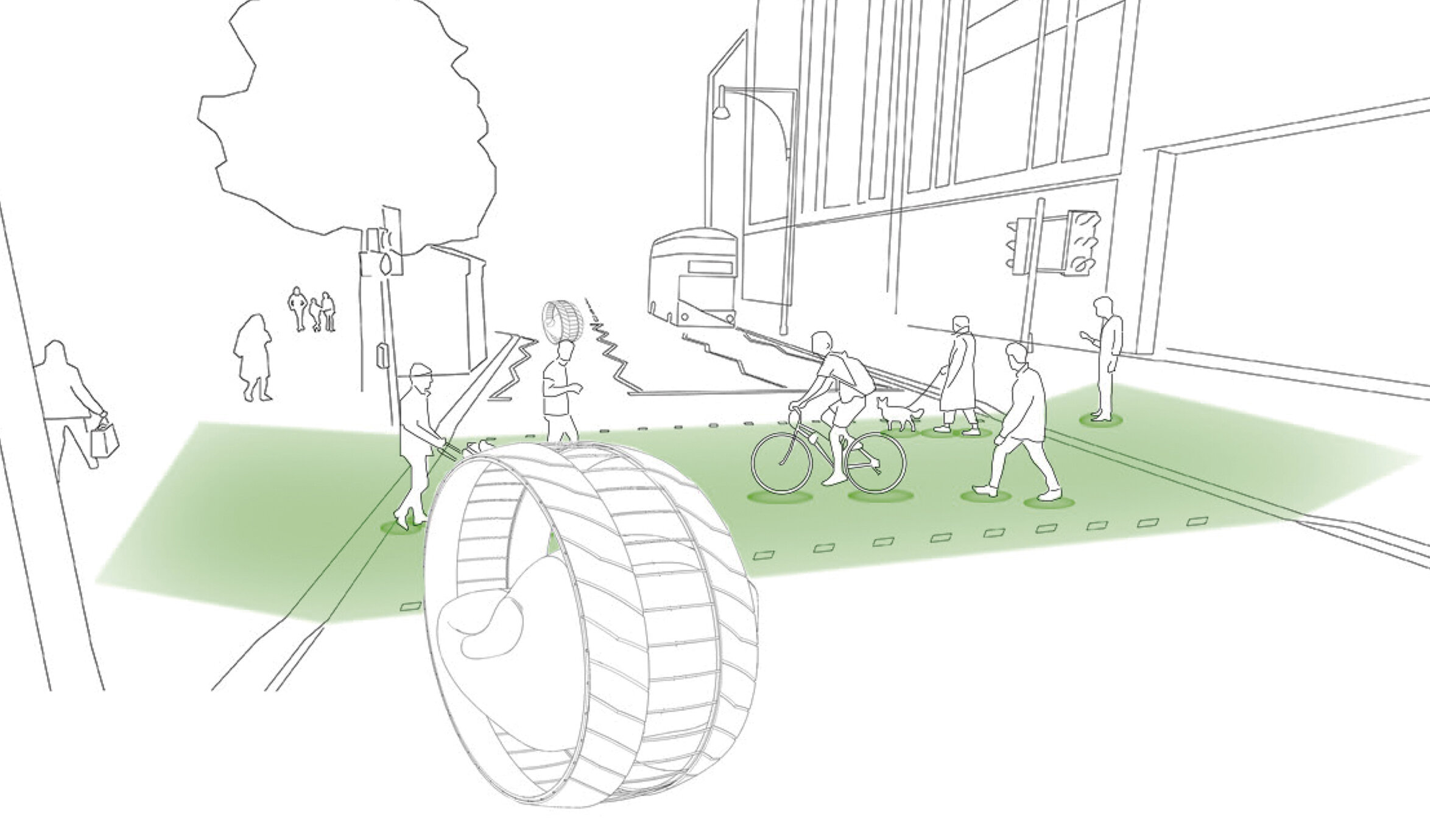
Proposal 3: AsOrb (typology).
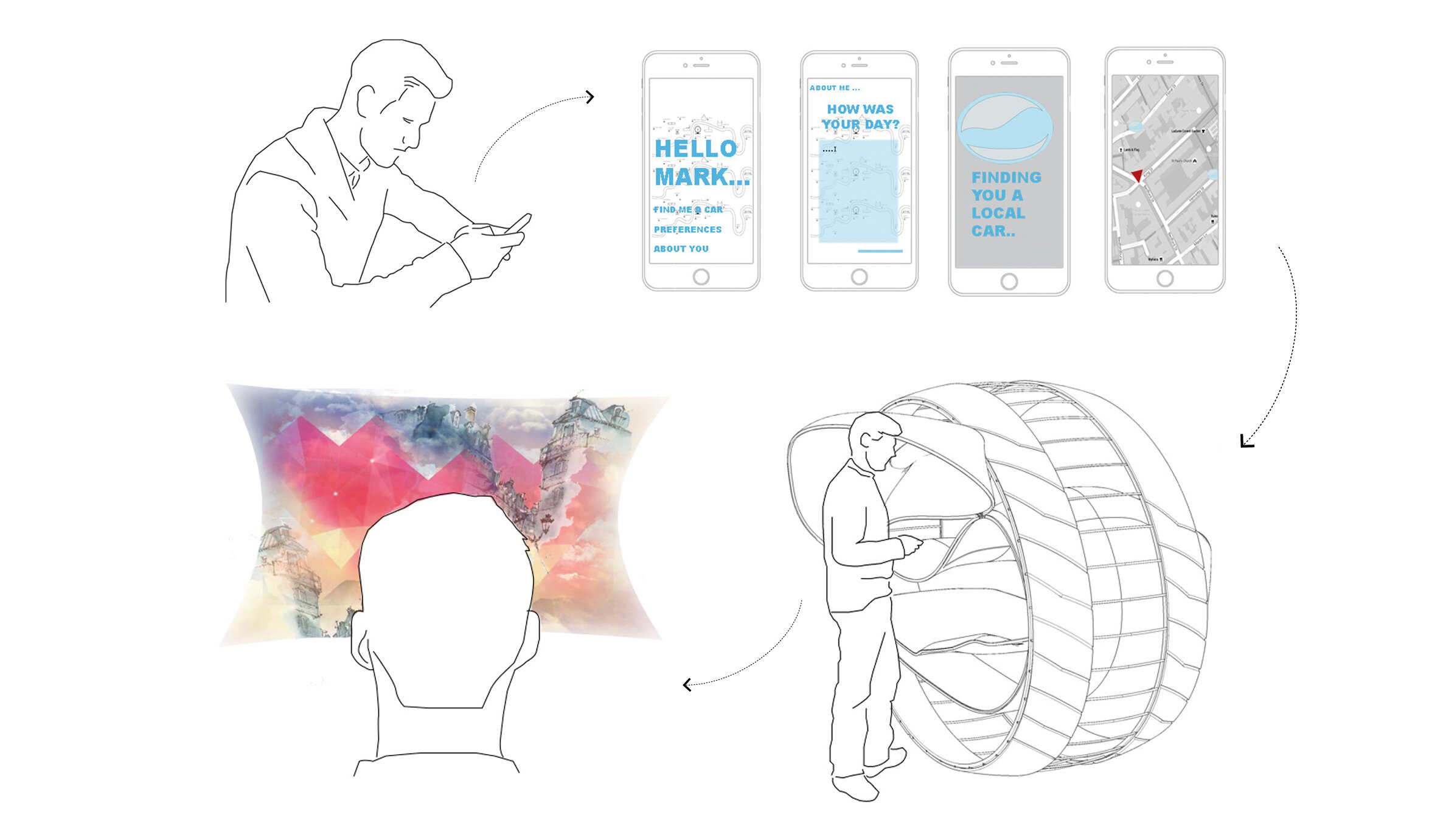
Proposal 3: AsOrb (service).
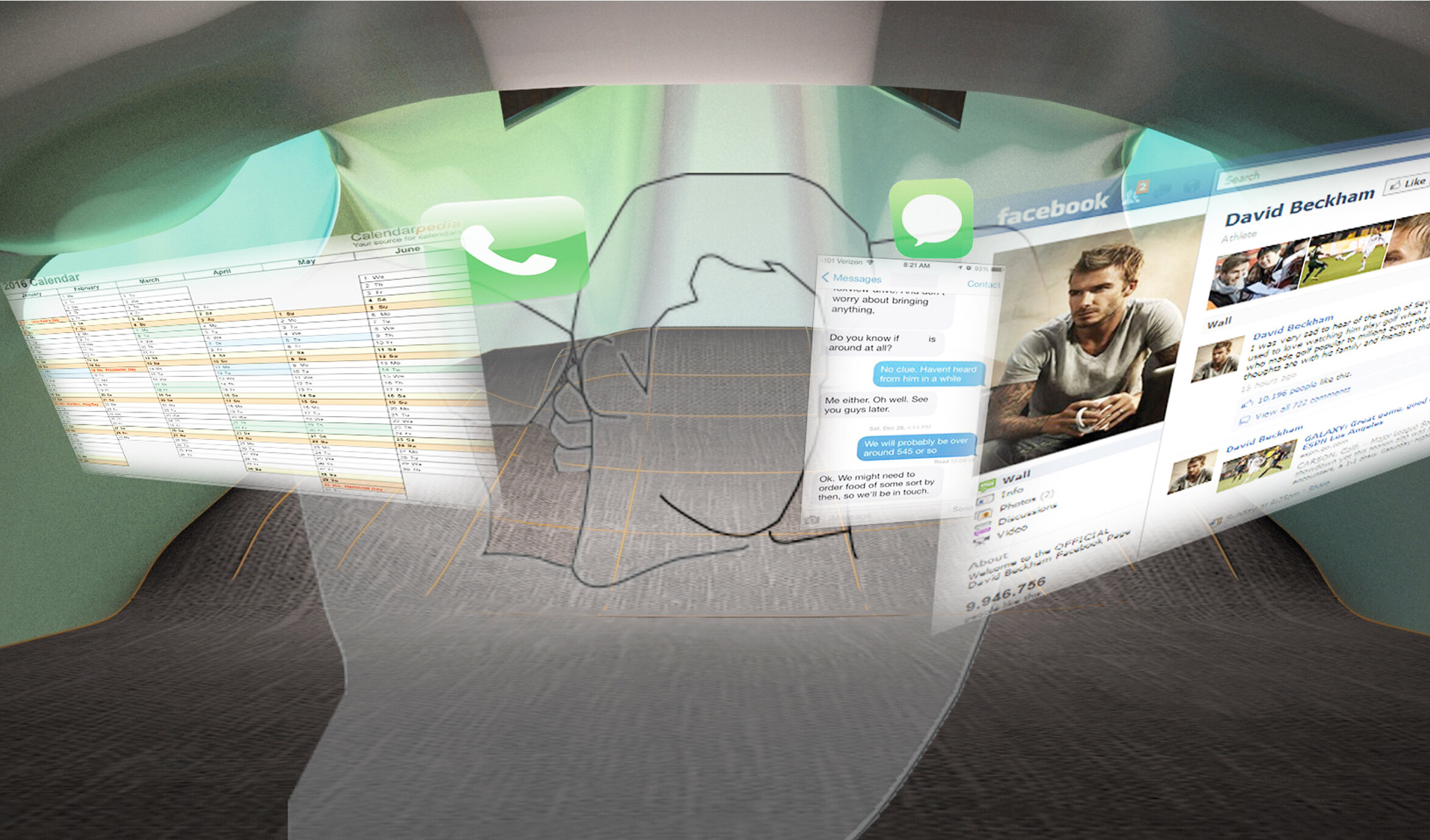
Proposal 3: AsOrb (interior view).
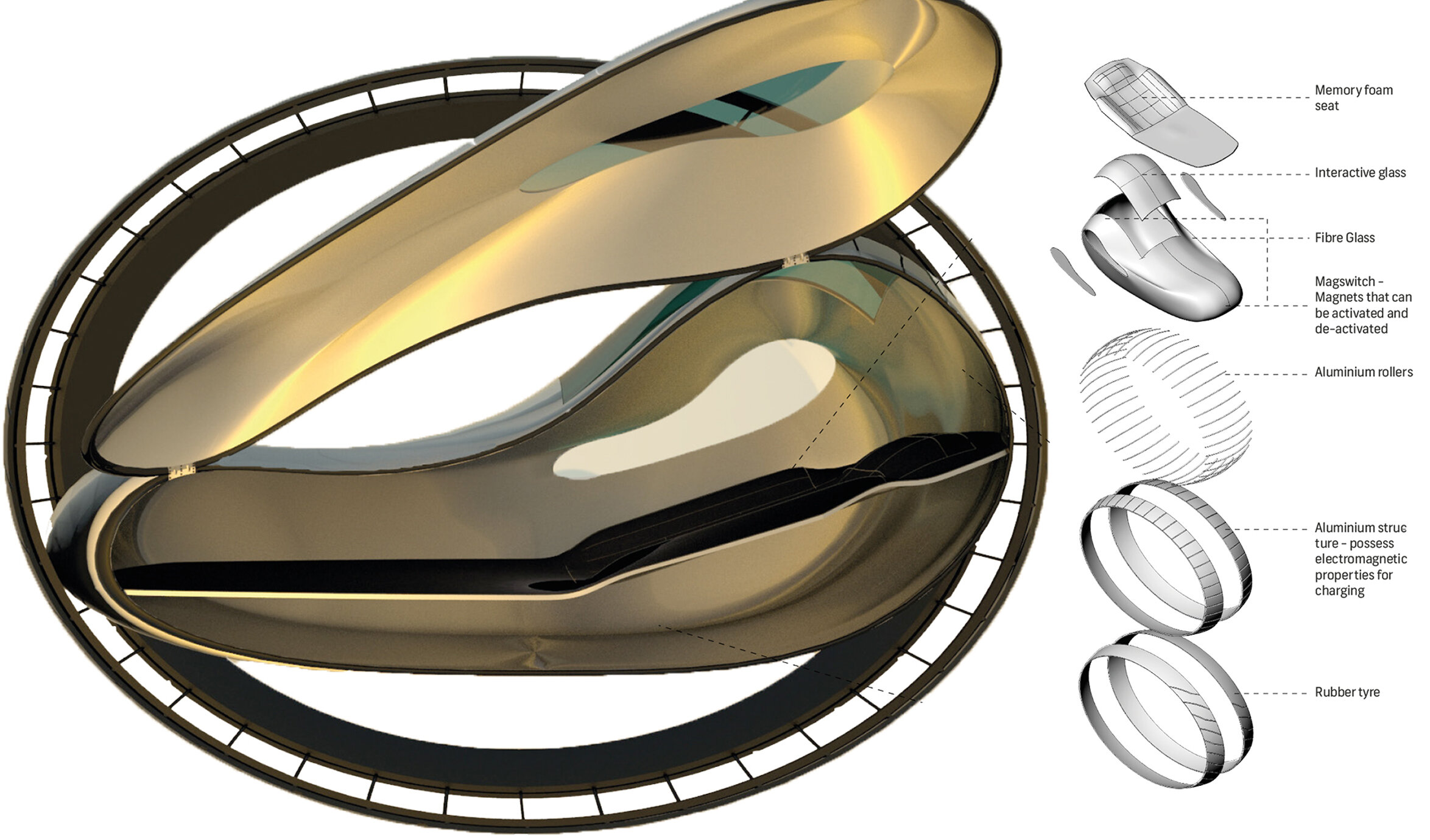
Proposal 3: AsOrb (components).

Proposal 3: AsOrb (exterior view).
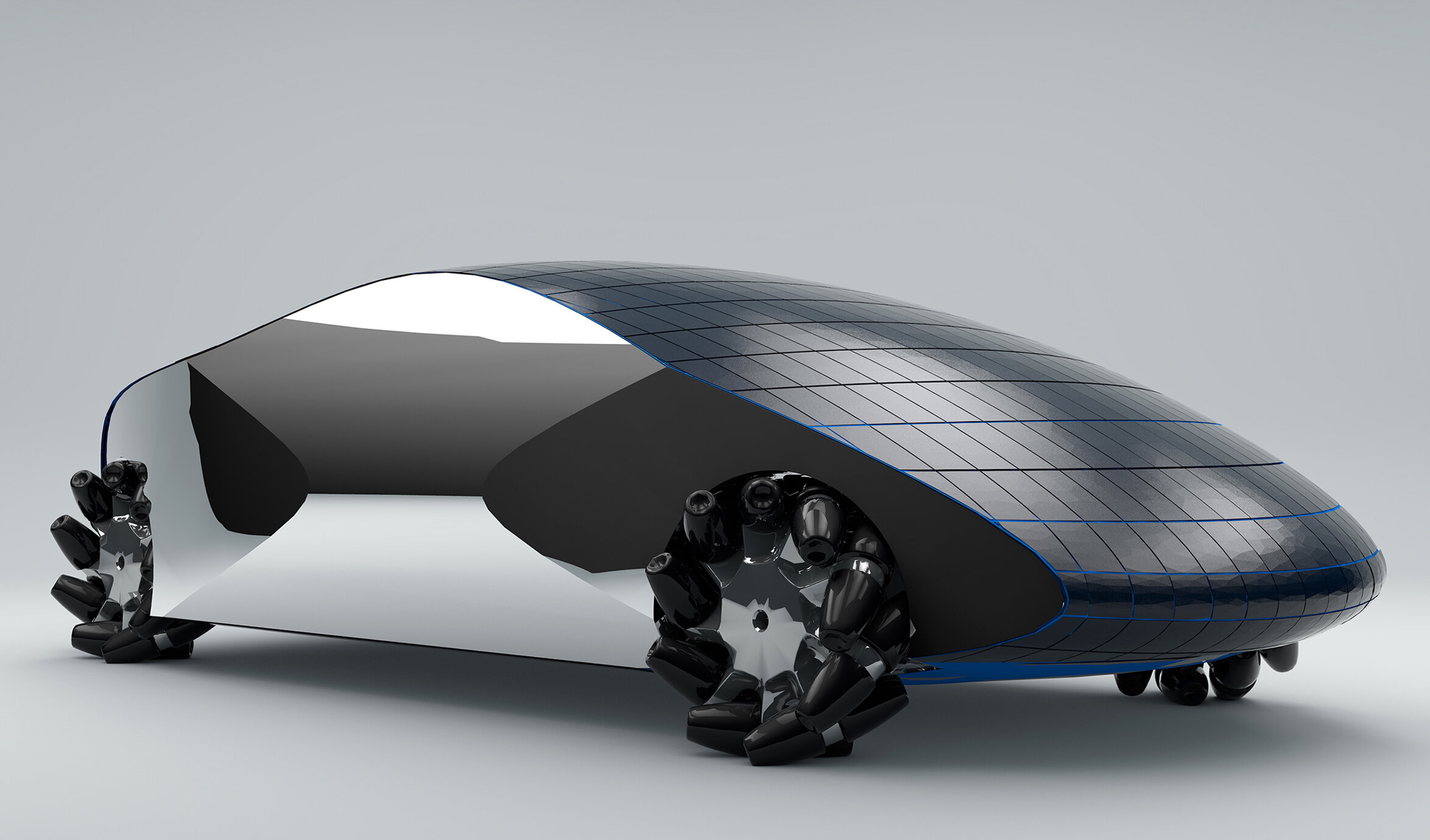
Proposal 4: Driverless Domicile Entertainment System.
> Driverless Domicile Entertainment System is a vehicle most would recognise as a ‘car’, but with its 360-degree wheels (meconium wheel) and polymorphic shell, with a futuristically luxurious appearance. The emphasis is on smooth navigation on the road and around buildings, and a keenness to establish an independent sense of comfort, entertainment and privacy whilst in motion that isn’t currently available to passengers.
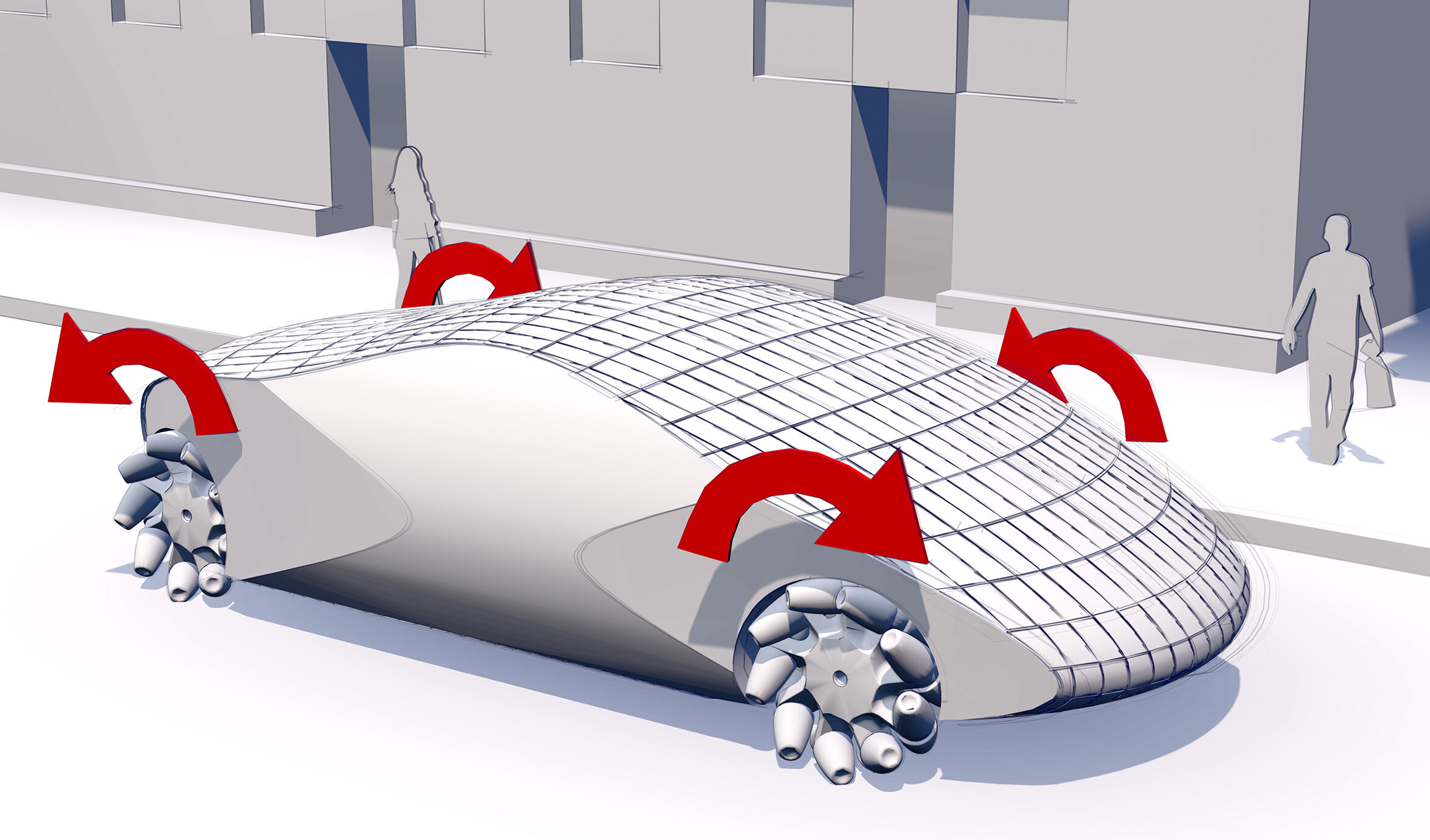
Proposal 4: Driverless Domicile Entertainment System (feature).
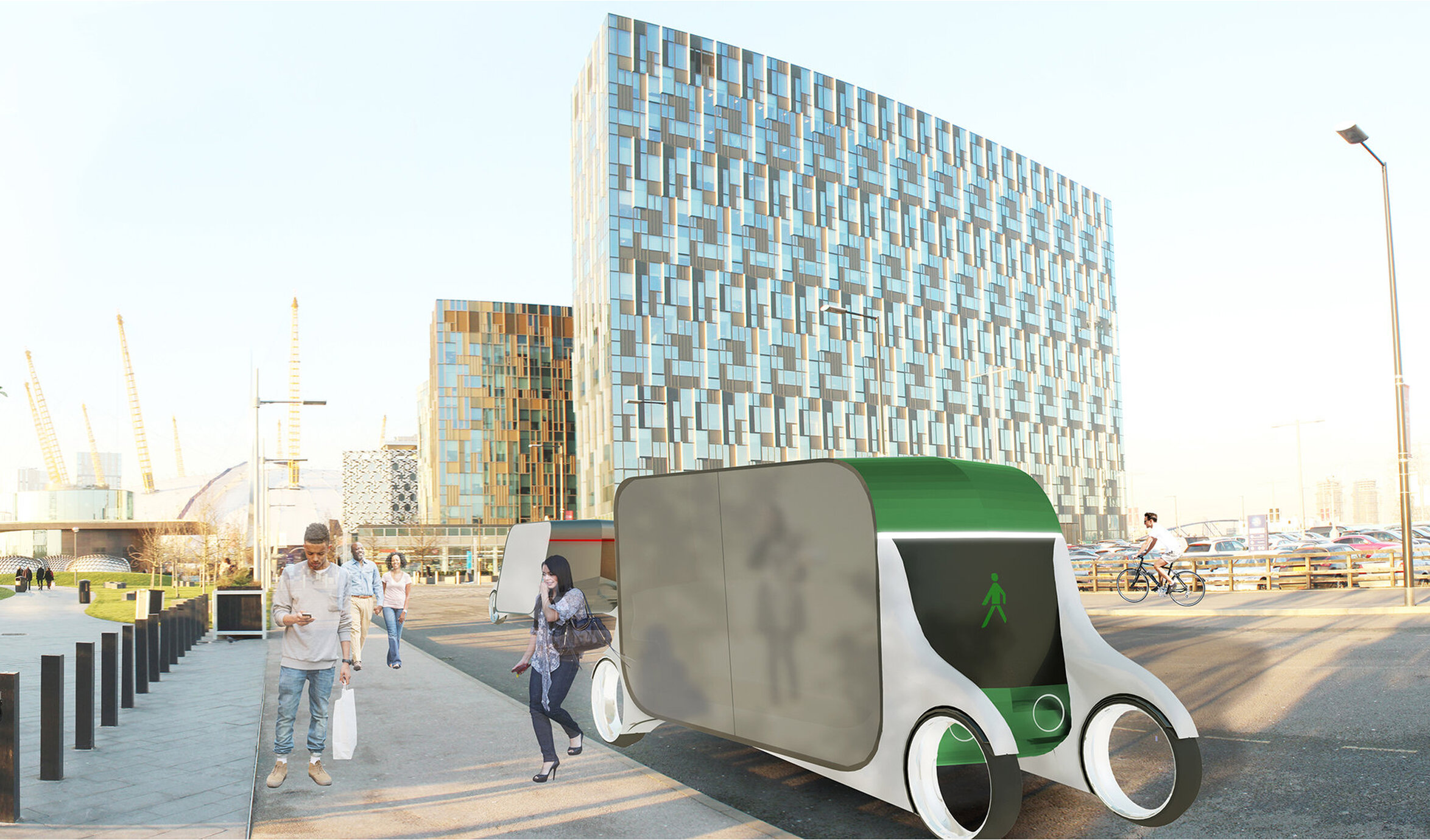
Proposal 5: Hinto.
> Hinto is a vehicle that, at the touch of a button, enables a seamless transition from one entertainment environment to another. It can be stored and lifted to ground-level from the side of skyscrapers to transport users directly from their living rooms, entertained with screened performances within the vehicle, until they reach their final destination, such as the O2 stadium for a live entertainment experience.

Proposal 5: Hinto (docking).

Proposal 5: Hinto (interior view).
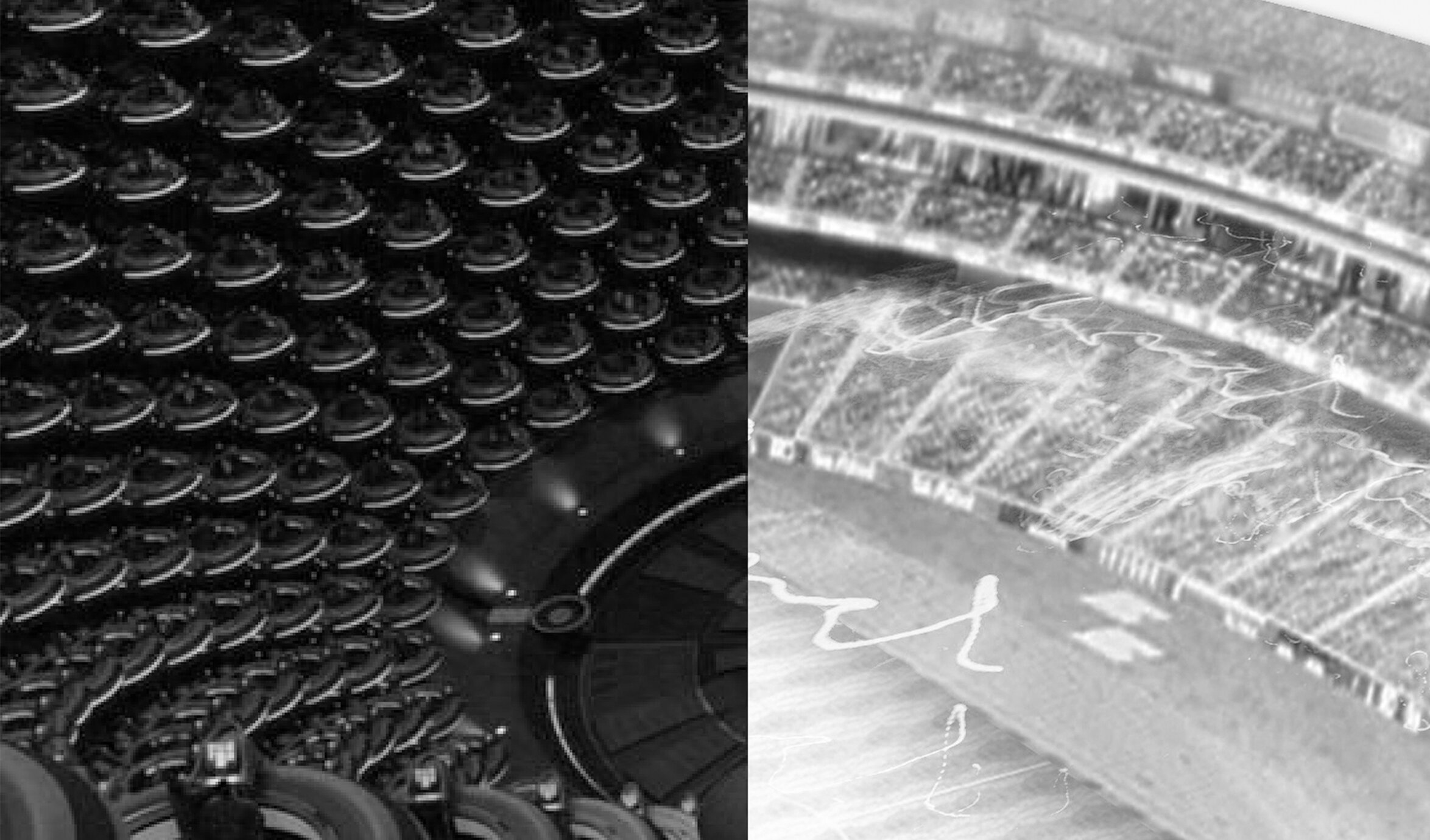
Proposal 5: Hinto (reference).

Proposal 5: Hinto (typology).
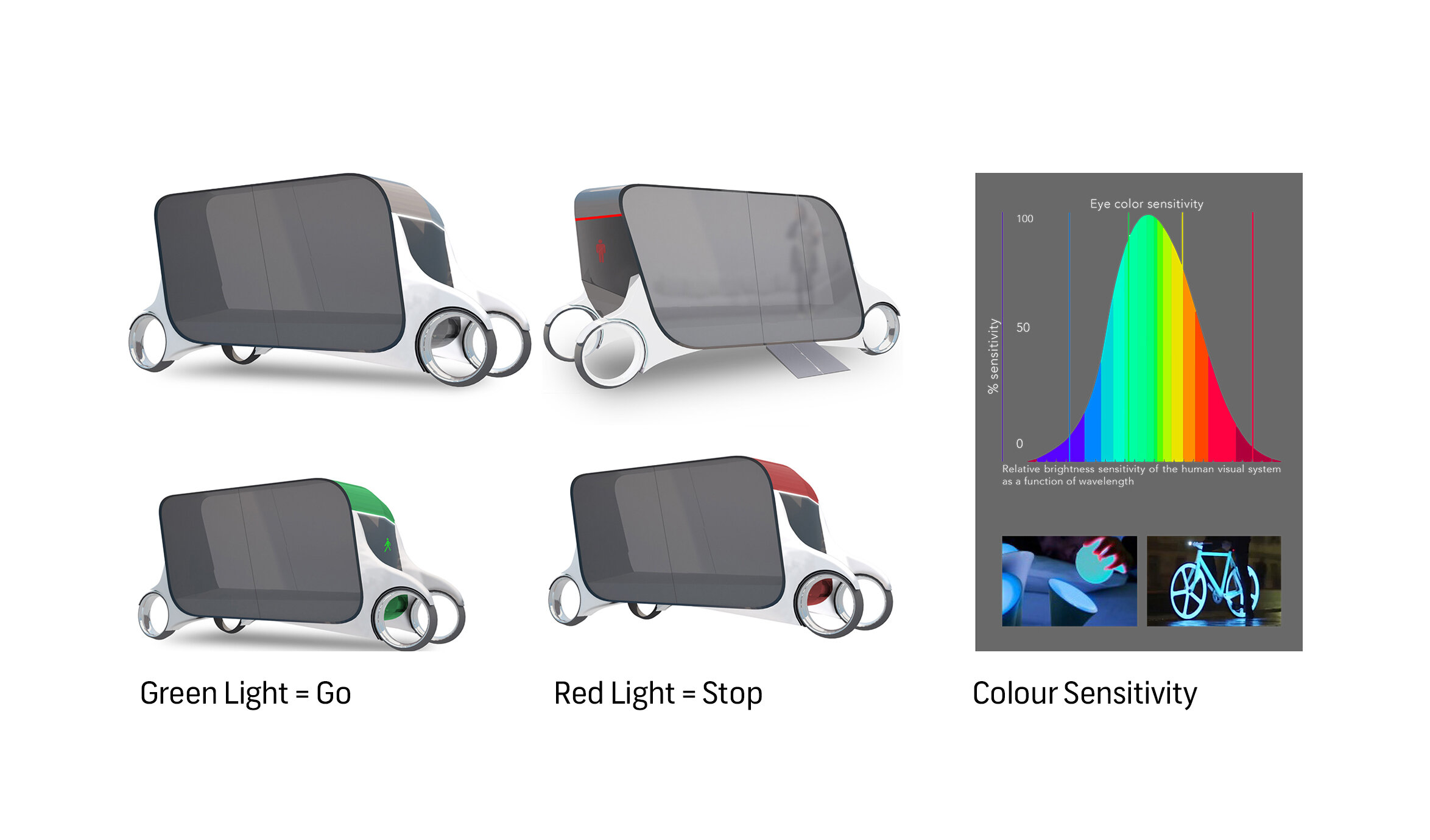
Proposal 5: Hinto (features).
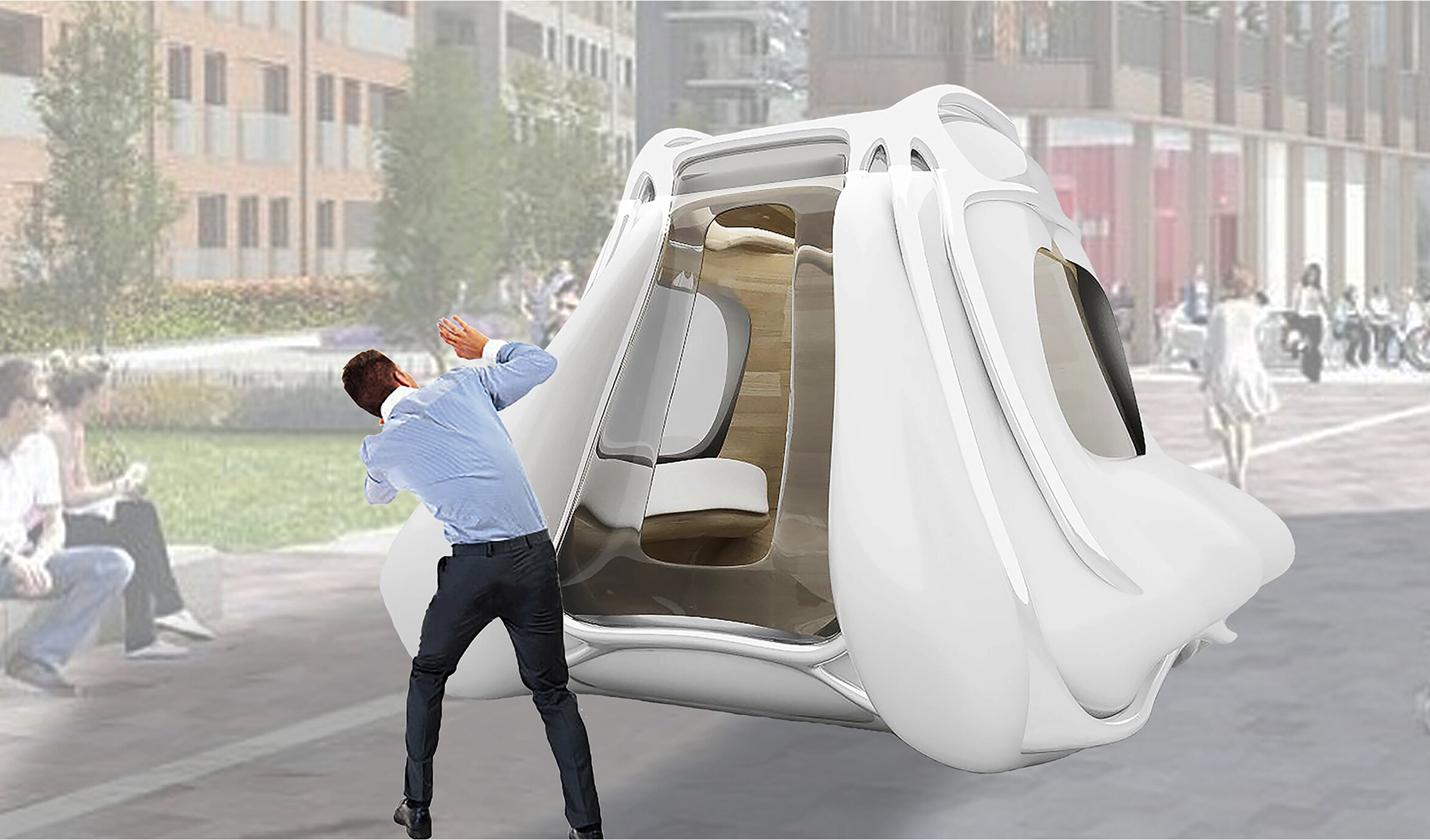
Proposal 6: Live Happy.
> Live Happy is a vehicle that ensures autonomous transport is inclusive and accessible for all. Focused on the car’s human-centric position within the urban fabric, airbags are fitted on both the interior and the exterior of the vehicle, whilst health monitoring and data of the user’s conditions trigger the adjustment of the vehicle’s interior space. The variable nature of people’s mobility and medical needs were at the forefront of this design.
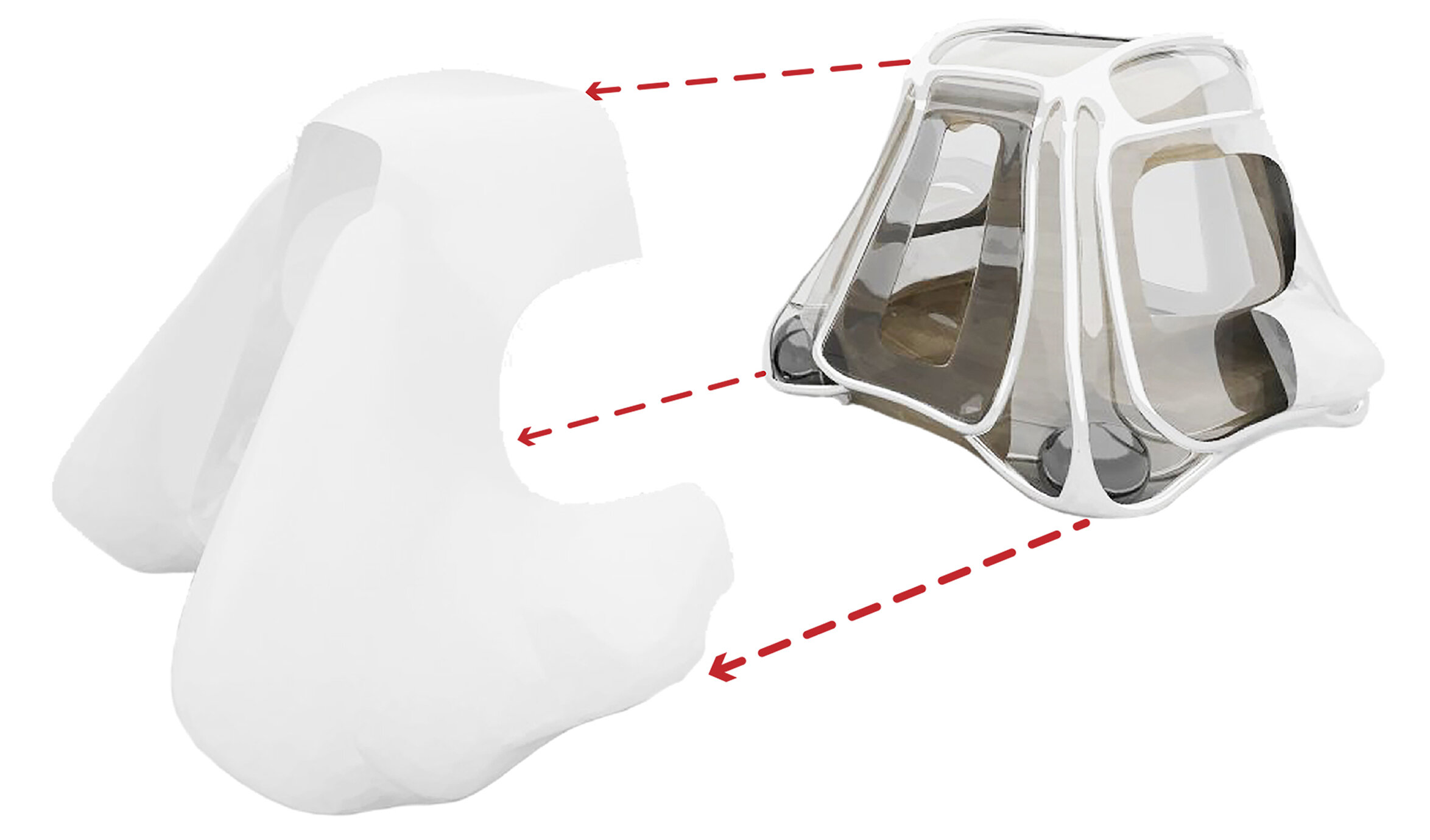
Proposal 6: Live Happy (impact safety skin).
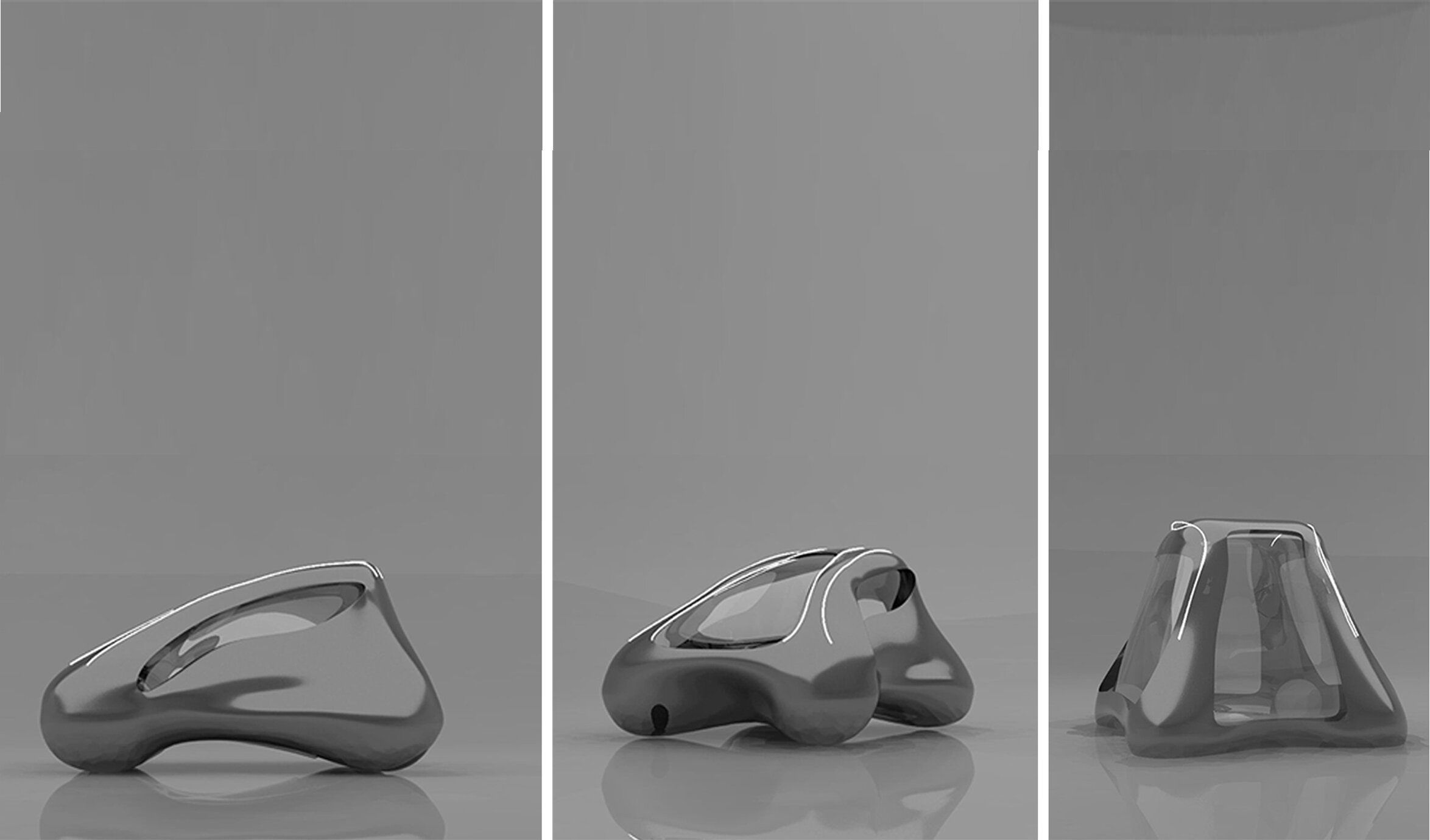
Proposal 6: Live Happy (typology).
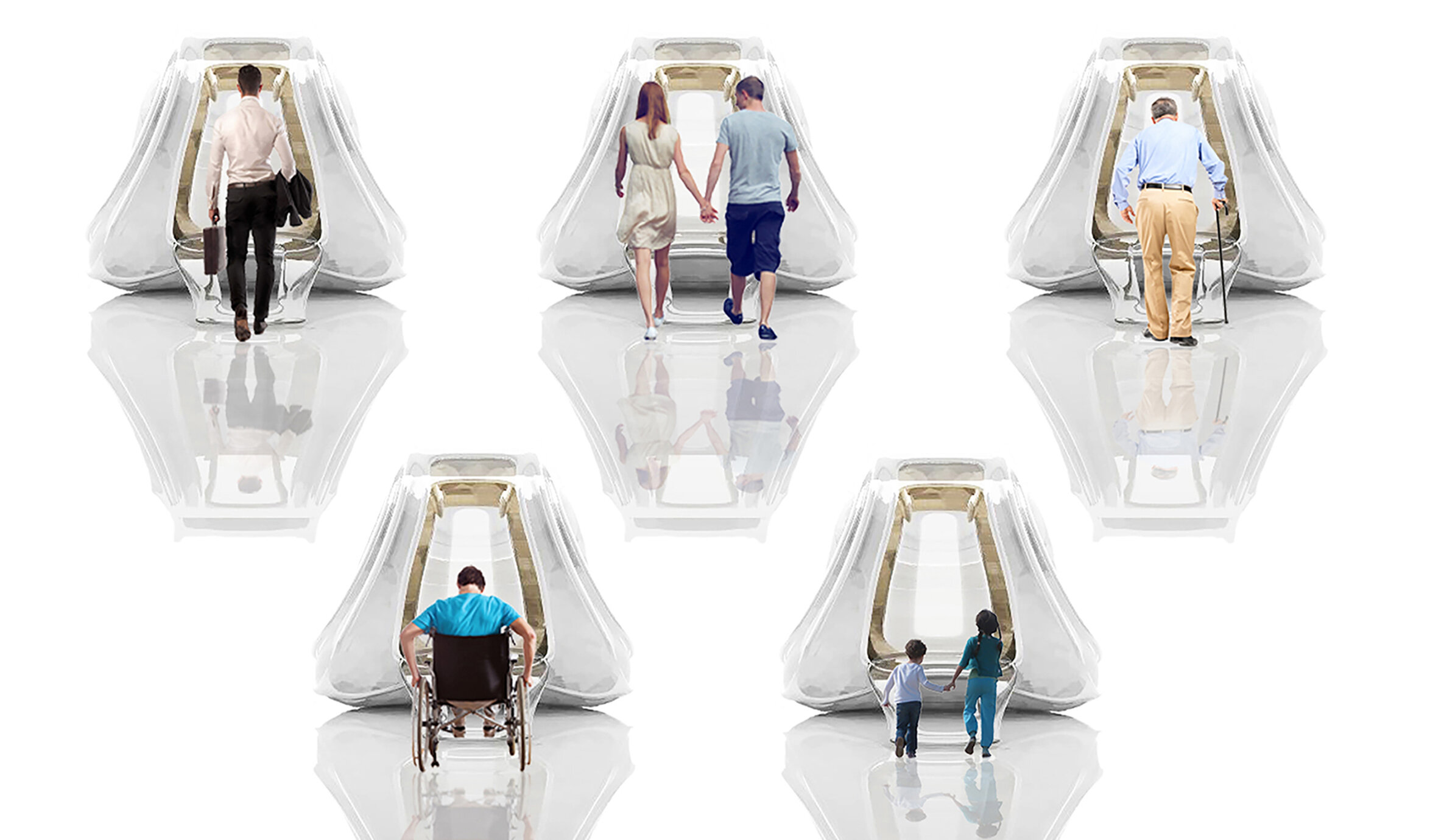
Proposal 6: Live Happy (features).
Organisation + [Credits]
Ravensbourne University London, [©Idrees Rasouli]
Role + [Team Size]
Co-Investigator, [12]
Date + [Duration of Involvement]
2016, [3 months]
Partner + [Project Location]
Greenwich Automated Transport Environment and
Transport Research, [London, UK]
Status + [Project Type]
Research, [Design-led Solutions]
Brief + [Challenge]
Introducing Driverless Cars to London, [Design for Future Needs]
Collaborators [Research & Design]
Co-Investigator (Dr. Brigitta Zics); Project Collaborators (Nick Reed, Transport Research Laboratory); Fluid (Jay Jordan); Shop to Go (Samuel Lewis); AsOrb (Finlay Johnson); Driverless Domicile Entertainment System (Ioannis Vasileiou and Louis Stocks); Hinto (Adriane Escarfullery); Live Happy (Leonardo Carmo Silva and Hasan Jamshed)
Collaborators [Video]
Animation and Filming (Amber Ryan, Adam Spring and Gyorgy Simon); Editing (Enrique Munoz Jimenez); Music and Sound Design (Tamas Czuper)

